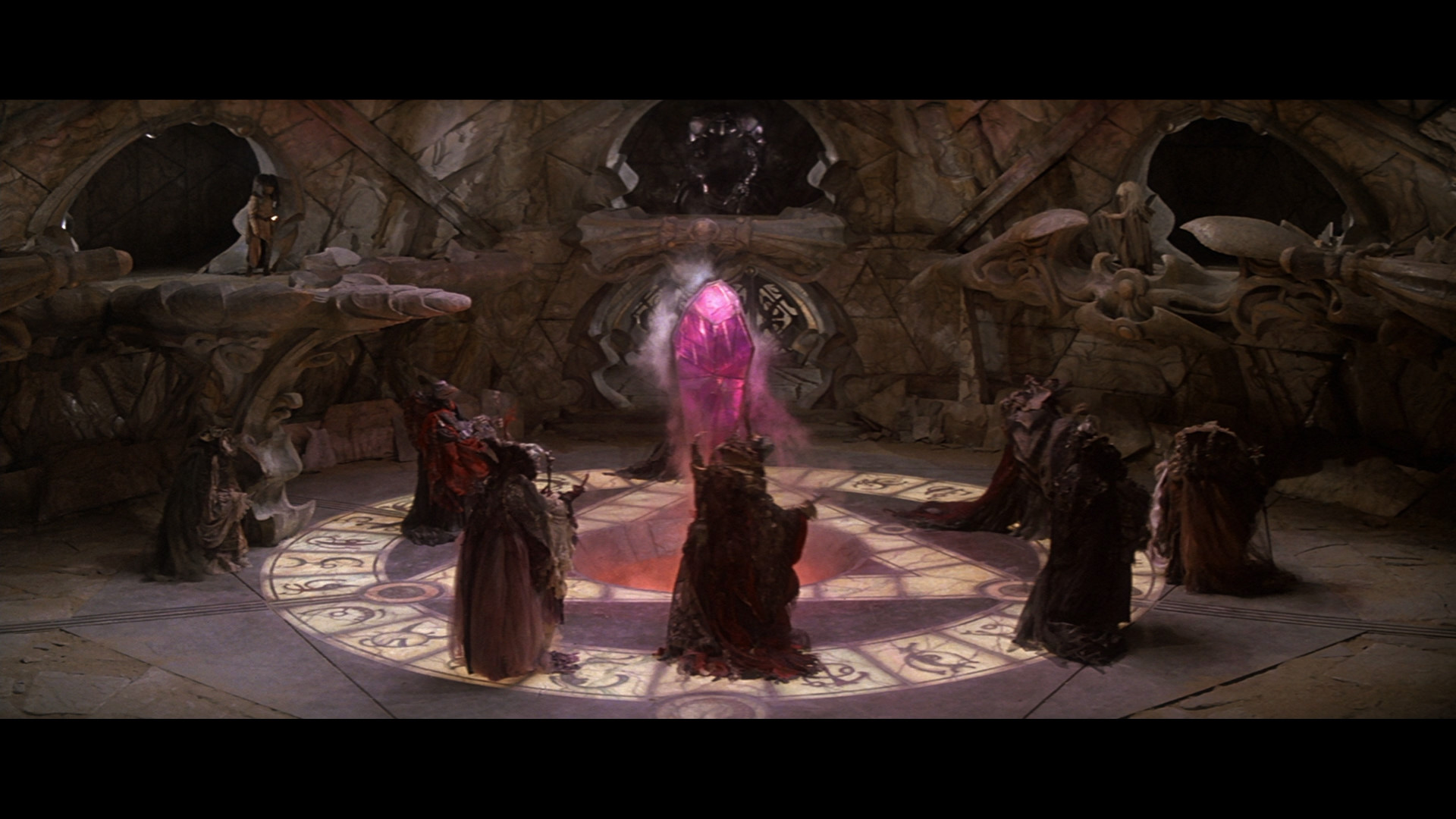
The first thing I noticed when watching the film, was that they use a lot of landscape shots - and even repeat some for emphasis. I found this to be important and interesting, because it helps to illustrate the terrain of the world they live in - outside of small caves and huge castles.
They repeated the opening scene again not too long into the film, as the wisest master began fading away in death same as the Skeksis emperor. Once Jen starts his journey, we begin to see him navigating the landscape in these shots.

Henson uses a lot of swooping and panning in this film. Ranging from panning across a few characters to emphasize importance, to swooping into a new scene from a window. He uses a lot of windows to break up space, and to help indicate time passing in a new scene - for example, there is a scene where they are speculating about the new emperor, and the sun is shone through one of the windows landing on them as they bicker. He uses swooping when the crystal begins to cry out and the Skeksis exit one room and enter the crystal room.

The main edit they perform in this film is the digital edit of fading out, or fading from one scene into the next. This is one of the more successful ways to edit digitally because it prevents the viewer from experiencing that shock or discontent if you have more than one shot that don't line up properly or as seamlessly as you'd like.
When a character speaks he usually focuses on them as they talk, at times, he'll instead focus on Jen, as to show his reaction to whatever the supporting character is telling him. This was evident when the master begins dying and telling Jen all about Jen's future in the prophecy.

The crystal, if in focus for the scene, is always placed in the center of the frame. Henson may show other characters mulling about around the crystal, by panning across the scene. But the crystal always remains in the center.

Rarely is the shot completely still, usually he is panning around characters or quickly clipping from one character to the next. This can be found when Jen is playing his flute by the water, and the scene doesn't stop moving till the end when it is ready to pan to the next. The quick clipping can be found both when the Skeksis are bickering and when the Chamberlin is being stripped for treason against the Emperor.
With the above, he also uses speed changes to indicate something atmospheric about the situation. He slowly pans when the scenes are building or something is going to happen. But then he will use quick changes, almost too quick to truly grasp the characters as more than a swarm. The build up is to create tension, just as the quick change is - they just create tension in separate ways.
No comments:
Post a Comment